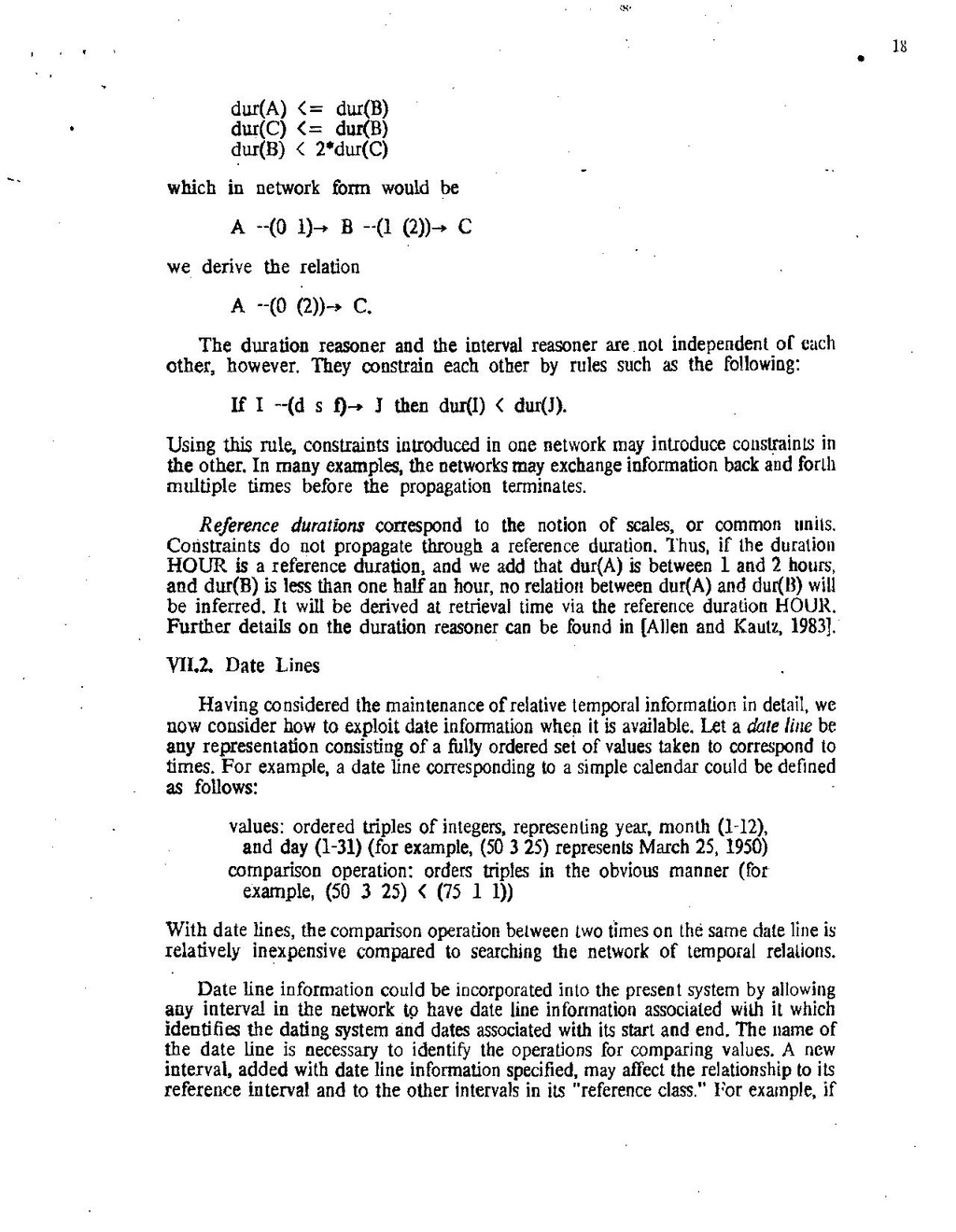dur(A) (= dur(B) duriC) <= dur(B) dur(B) < 2*dur(C)
which in network form would be
A -(01) B --(1 (2)→ C
we derive the relation
A --(0 (2)) → C. The duration reasoner and the interval reasoner are not independent of cach other, however. They constrain each other by rules such as the following:
If I --ds 1)- I then dur(I) < dur(J). Using this rule, constraints introduced in one network may introduce constraints in the other. In many examples, the networks may exchange information back and forth multiple times before the propagation terminates.
Reference durations correspond to the notion of scales, or common units. Constraints do not propagate through reference duration. Thus, if the duration HOUR is a reference duration, and we add that dur(A) is between 1 and 2 hours, and dur(B) is less than one half an hour, no relation between dur(A) and dur(B) will be inferred. It will be derived at retrieval time via the reference duration HOUR. Further details on the duration reasoner can be found in (Allen and Kautz, 1983).
VII.2. Date Lines
Having considered the maintenance of relative temporal information in detail, we now consider how to exploit date information when it is available. Let a date line be any representation consisting of a fully ordered set of values taken to correspond to times. For example, a date line corresponding to a simple calendar could be defined as follows:
values: ordered triples of integers, representing year, month (1-12),
and day (1-31) (for example, (50 3 25) represents March 25, 1950) comparison operation: orders triples in the obvious manner (for
example, (50 3 25)< (75 1 1)) With date lines, the comparison operation between two times on the same date line is relatively inexpensive compared to searching the network of temporal relations.
Date line information could be incorporated into the present system by allowing any interval in the network to have date line information associated with it which identifies the dating system and dates associated with its start and end. The name of the date line is necessary to identify the operations for comparing values. A new interval, added with date line information specified, may affect the relationship to its reference interval and to the other intervals in its "reference class." For example, if
